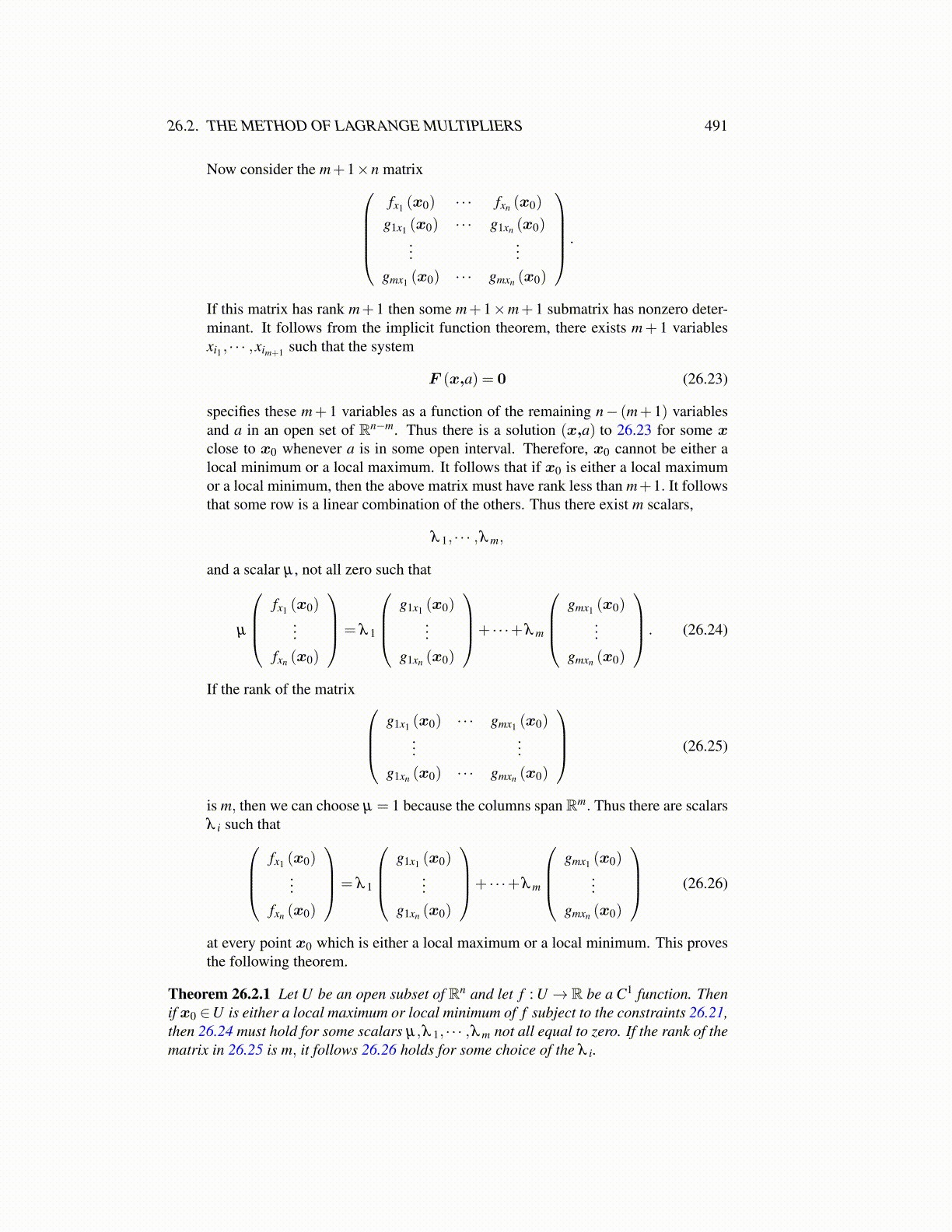
26.2. THE METHOD OF LAGRANGE MULTIPLIERS 491
Now consider the m+1×n matrixfx1 (x0) · · · fxn (x0)
g1x1 (x0) · · · g1xn (x0)...
...gmx1 (x0) · · · gmxn (x0)
.
If this matrix has rank m+1 then some m+1×m+1 submatrix has nonzero deter-minant. It follows from the implicit function theorem, there exists m+ 1 variablesxi1 , · · · ,xim+1 such that the system
F (x,a) = 0 (26.23)
specifies these m+ 1 variables as a function of the remaining n− (m+1) variablesand a in an open set of Rn−m. Thus there is a solution (x,a) to 26.23 for some xclose to x0 whenever a is in some open interval. Therefore, x0 cannot be either alocal minimum or a local maximum. It follows that if x0 is either a local maximumor a local minimum, then the above matrix must have rank less than m+1. It followsthat some row is a linear combination of the others. Thus there exist m scalars,
λ 1, · · · ,λ m,
and a scalar µ , not all zero such that
µ
fx1 (x0)
...fxn (x0)
= λ 1
g1x1 (x0)
...g1xn (x0)
+ · · ·+λ m
gmx1 (x0)
...gmxn (x0)
. (26.24)
If the rank of the matrix g1x1 (x0) · · · gmx1 (x0)
......
g1xn (x0) · · · gmxn (x0)
(26.25)
is m, then we can choose µ = 1 because the columns span Rm. Thus there are scalarsλ i such that
fx1 (x0)...
fxn (x0)
= λ 1
g1x1 (x0)
...g1xn (x0)
+ · · ·+λ m
gmx1 (x0)
...gmxn (x0)
(26.26)
at every point x0 which is either a local maximum or a local minimum. This provesthe following theorem.
Theorem 26.2.1 Let U be an open subset of Rn and let f : U → R be a C1 function. Thenif x0 ∈U is either a local maximum or local minimum of f subject to the constraints 26.21,then 26.24 must hold for some scalars µ,λ 1, · · · ,λ m not all equal to zero. If the rank of thematrix in 26.25 is m, it follows 26.26 holds for some choice of the λ i.